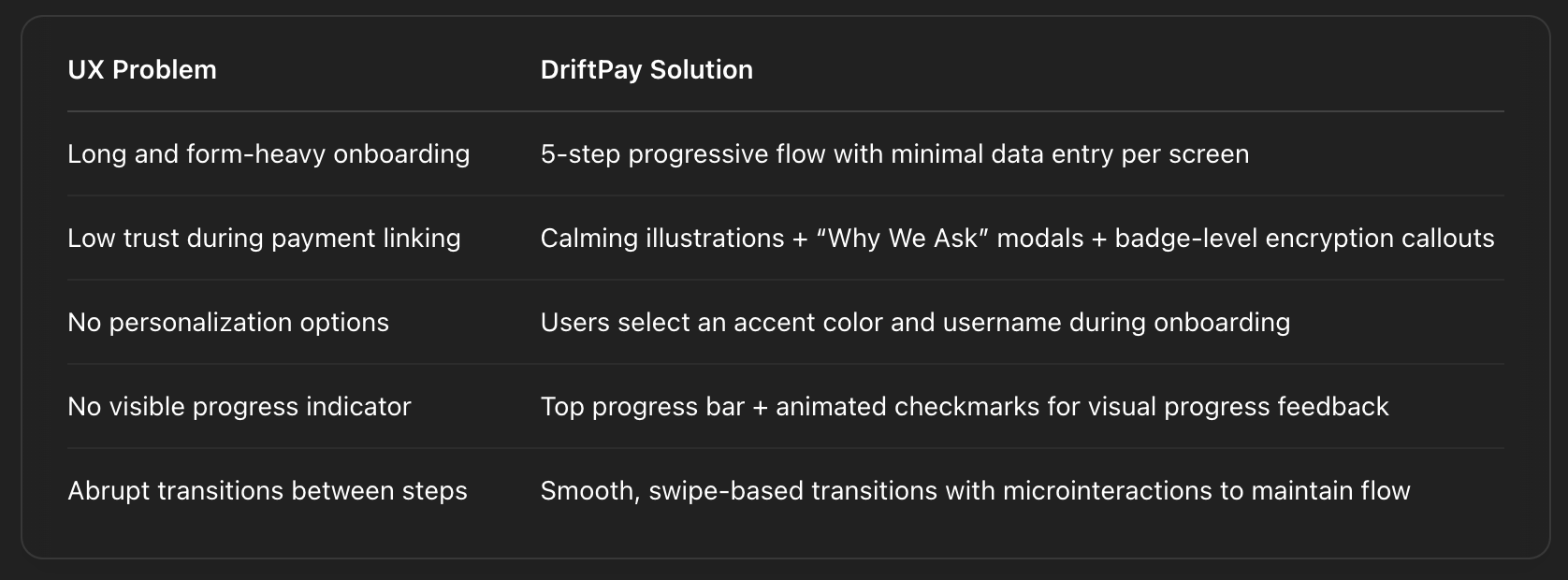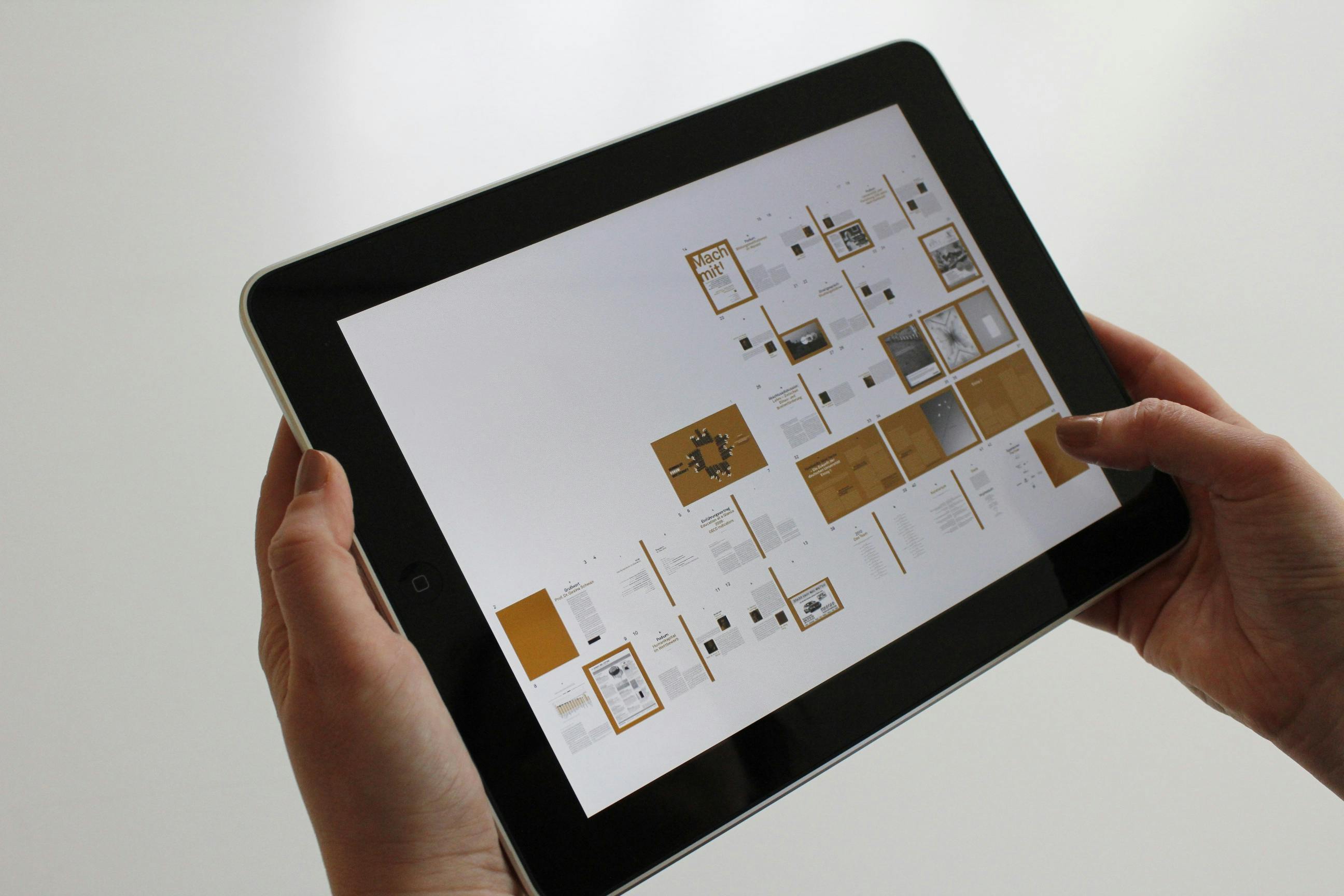In fintech, trust and clarity are everything. My onboarding UX approach is built to minimize user hesitation, ensure compliance, and foster confidence from the very first interaction. Whether it's identity verification, linking bank accounts, or setting up personal finance goals, I create flows that balance regulatory requirements with seamless usability.
From secure KYC/AML steps to personalized dashboards, I design onboarding journeys that educate, reassure, and convert. Each touchpoint is crafted to reduce drop-offs, improve time-to-value, and build long-term engagement turning cautious users into confident advocates.
DriftPay is a mobile-first peer-to-peer payment app that merges the simplicity of Cash App, the speed of Zelle, and the social transparency of Venmo. As the lead UI/UX designer, my goal was to craft a frictionless and trustworthy onboarding flow that quickly gets users sending and receiving money without cognitive overload or technical confusion.
Timeline August 2024 – December 2024

Users across fintech apps often abandon onboarding due to overly complex setup steps, lack of visual feedback or clarity, low trust in linking sensitive financial information, and unintuitive interfaces across devices. This created a need for a streamlined, secure, and modern onboarding experience to retain first-time users and establish credibility.

I designed a 5-step onboarding flow that emphasized speed, clarity, and trust. My process involved user journey mapping to reduce friction points, progressive disclosure to avoid overwhelming screens, microinteractions and motion design to communicate status and feedback, visual language consistency using soft illustrations, iconography, and high-contrast CTAs. Each screen guided users confidently from sign-up to linking their payment method keeping conversion and usability at the core.

Ensure DriftPay's onboarding flow exceeds user expectations by auditing competitors and solving for friction points in P2P payment apps.
I reviewed marketing and product pages of competitors like PayPal and other financial institutions to gather best practices and inspiration.


Across competitive fintech products, several key UX issues were identified during the audit. Most platforms overwhelm new users with extensive sign-up forms before establishing trust or offering reassurance, creating friction at a critical point in the journey. Additionally, the absence of contextual help such as explanations for why certain personal information is required can leave users feeling unsure or even suspicious. Many onboarding flows also lack human-centered touches, like emoji feedback, animations, or real-time encouragement, which could otherwise ease tension and create a more inviting experience. Finally, the lack of clear progress indicators often results in confusion about how long onboarding will take, increasing the likelihood of drop-offs.

Frequent back-and-forth for content approvals required additional coordination with the marketing team and legal department was the challenge for me during this project. •
Using the font Inter, for maximum legibility.
Color palette blue primary (#2B67F6) for trust, mint green for success states, and white backgrounds to reduce visual noise.
Added motion with slide-in transitions, loading dots, and emoji feedback to humanize interactions.
Added accessibility with WCAG-compliant contrast and large tap areas.
Users choose their accent color during onboarding for personalization.


I reduced projected onboarding time to under 45 seconds, Improved clarity with 60% fewer user taps compared to traditional flows, designed with future growth in mind: The modular onboarding flow allows for easy A/B testing of new features like crypto wallet integration or biometric security, delivered dev-ready handoff with annotated frames, reusable UI components, and interaction specs.

If you like what you see and want to work together, get in touch!
khmediasd@gmail.com